Artificial Intelligence
AI + Architecture
Towards a New Approach
Stanislas Chaillou
Harvard University, Graduate School of Design
2019
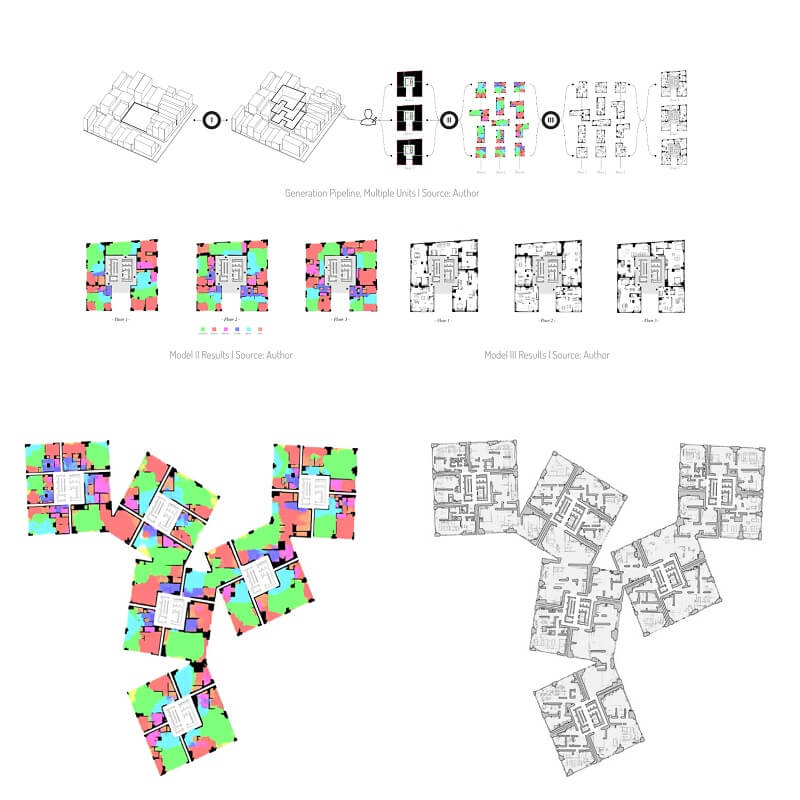
Artificial Intelligence, as a discipline, has already been permeating countless fields, bringing means and methods to previously unresolved challenges, across industries. The advent of AI in Architecture is still in its early days but offers promising results. More than a mere opportunity, such potential represents for us a major step ahead, about to reshape the architectural discipline.
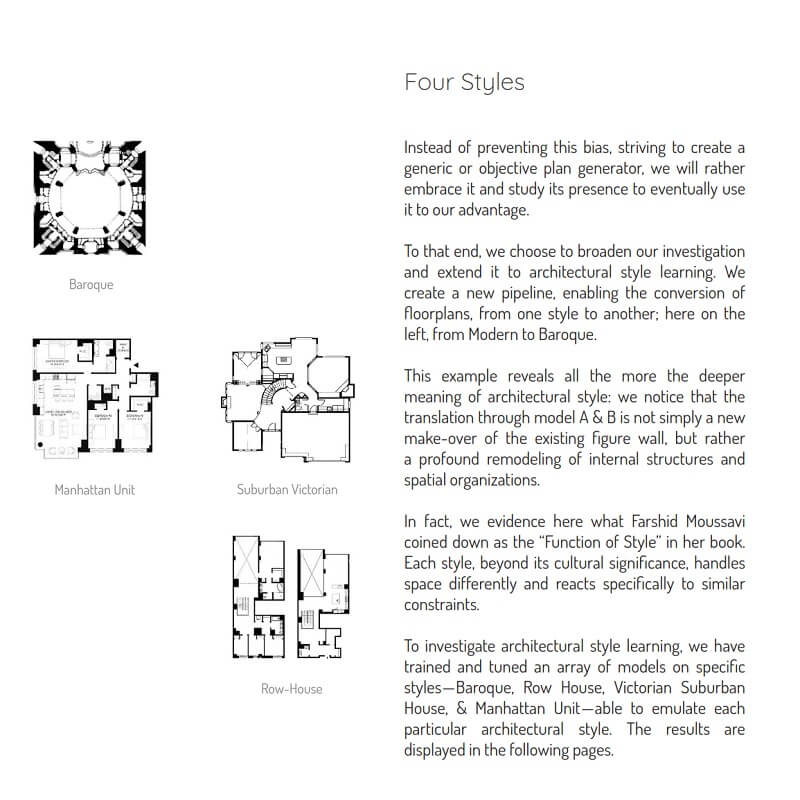 This thesis by Stanislas Chaillou, proposes to evidence this promise when applied to the built environment. Specifically, author offers to apply AI to floor plans analysis and generation. The ultimate goal is three-fold: (1) to generate floor plans i.e. optimize the generation of a large and highly diverse quantity of floor plan designs, (2) to qualify floor plans i.e. offer a proper classification methodology (3) to allow users to “browse” through generated design options.
This thesis by Stanislas Chaillou, proposes to evidence this promise when applied to the built environment. Specifically, author offers to apply AI to floor plans analysis and generation. The ultimate goal is three-fold: (1) to generate floor plans i.e. optimize the generation of a large and highly diverse quantity of floor plan designs, (2) to qualify floor plans i.e. offer a proper classification methodology (3) to allow users to “browse” through generated design options.
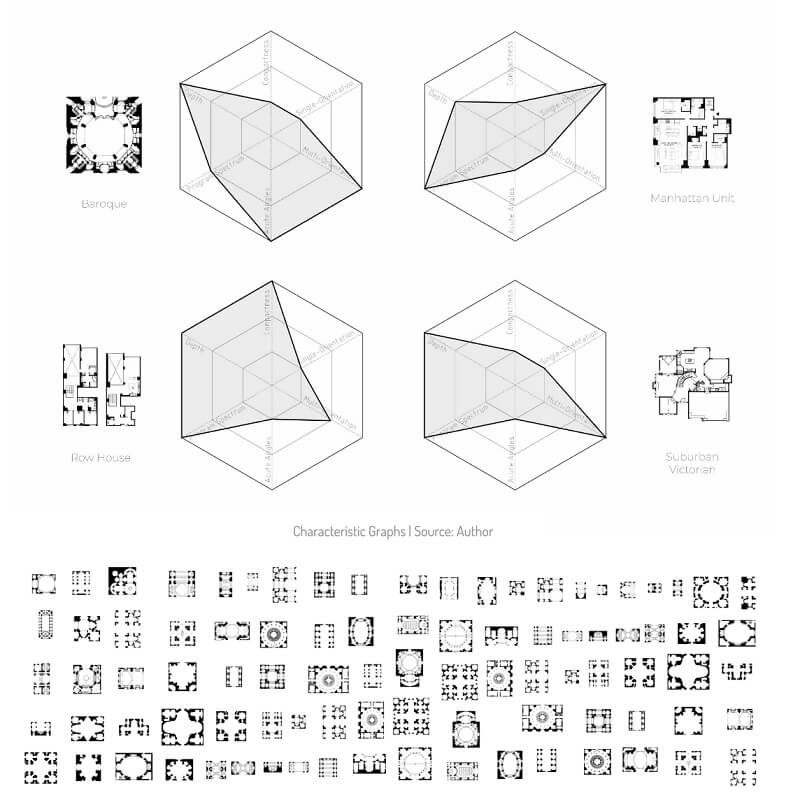 The methodology follows two main intuitions (1) the creation of building plans is a non-trivial technical challenge, although encompassing standard optimization technics, and (2) the design of space is a sequential process, requiring successive design steps across different scales (urban scale, building scale, unit scale). Then, in order to harness these two realities, author has chosen nested Generative Adversarial Neural Networks or GANs.
The methodology follows two main intuitions (1) the creation of building plans is a non-trivial technical challenge, although encompassing standard optimization technics, and (2) the design of space is a sequential process, requiring successive design steps across different scales (urban scale, building scale, unit scale). Then, in order to harness these two realities, author has chosen nested Generative Adversarial Neural Networks or GANs.
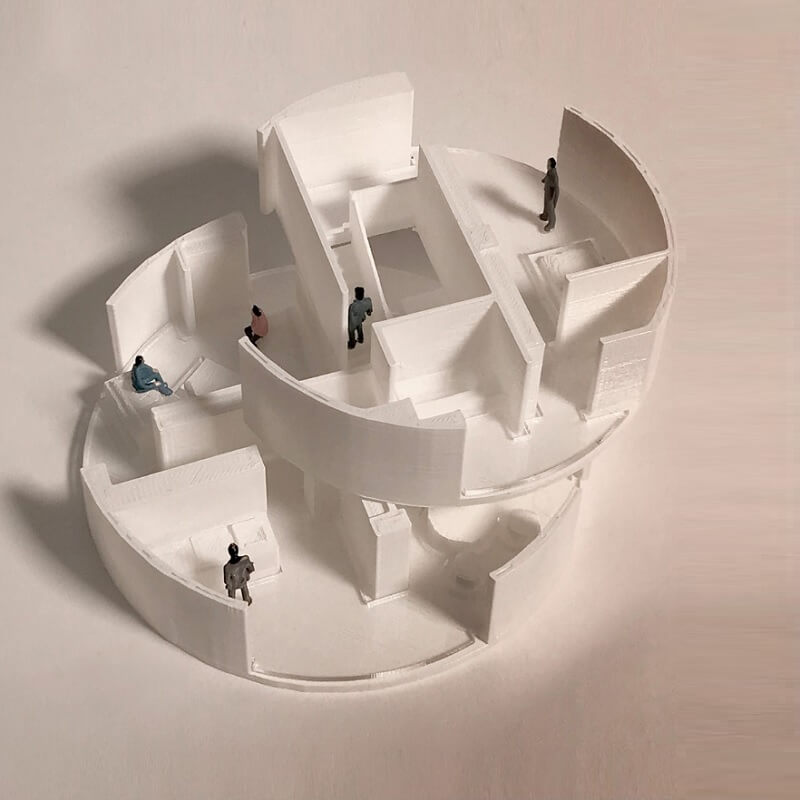 Such models enable designers to capture more complexity across encountered floor plans and to break down the complexity by tackling problems through successive steps. Each step corresponding to a given model, specifically trained for this particular task, the process can eventually evidence the possible back and forth between humans and machines.
Such models enable designers to capture more complexity across encountered floor plans and to break down the complexity by tackling problems through successive steps. Each step corresponding to a given model, specifically trained for this particular task, the process can eventually evidence the possible back and forth between humans and machines.
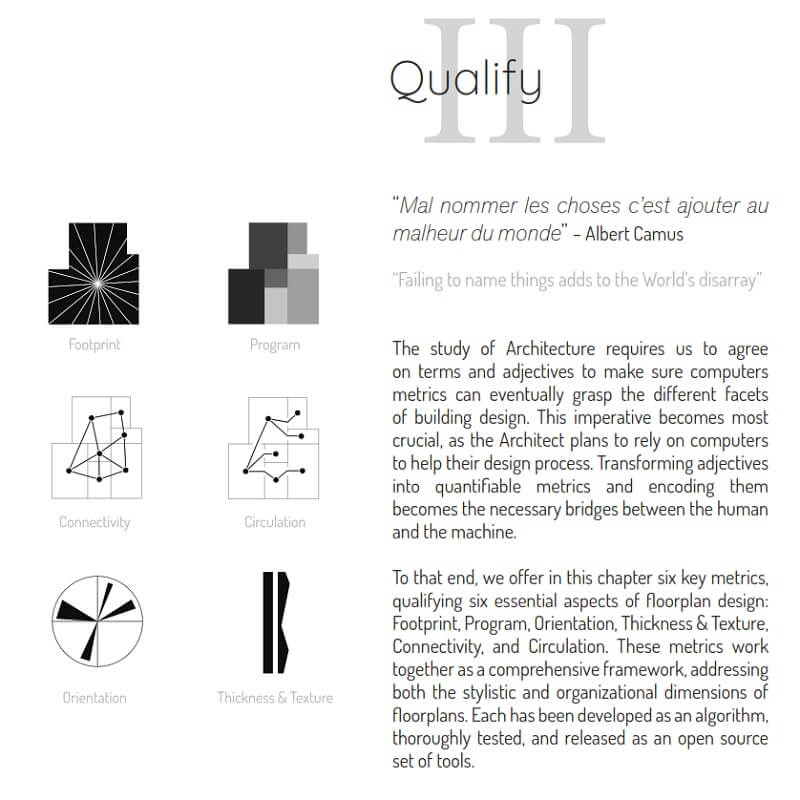 Plans are indeed a high-dimensional problem, at the crossroad of quantifiable technics, and more qualitative properties. The study of architectural precedent remains too often a hazardous process, that negates the richness of the number of existing resources while lacking in analytical rigor. The methodology, inspired by current Data Science methodologies, aims at qualifying floor plans.
Plans are indeed a high-dimensional problem, at the crossroad of quantifiable technics, and more qualitative properties. The study of architectural precedent remains too often a hazardous process, that negates the richness of the number of existing resources while lacking in analytical rigor. The methodology, inspired by current Data Science methodologies, aims at qualifying floor plans.
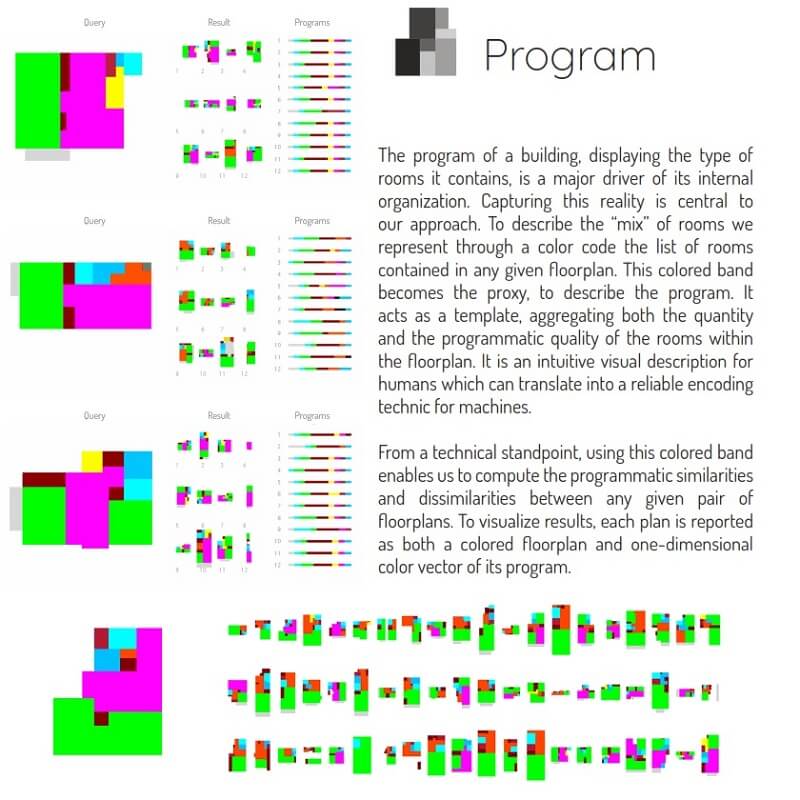 Through the creation of 6 metrics, author proposes a framework that captures architecturally relevant parameters of floor plans. On one hand, Footprint Shape, Orientation, Thickness & Texture are three metrics capturing the essence of a given floor plan’s style. On the other hand, Program, Connectivity, and Circulation are meant to depict the essence of any floor plan organization.
Through the creation of 6 metrics, author proposes a framework that captures architecturally relevant parameters of floor plans. On one hand, Footprint Shape, Orientation, Thickness & Texture are three metrics capturing the essence of a given floor plan’s style. On the other hand, Program, Connectivity, and Circulation are meant to depict the essence of any floor plan organization.
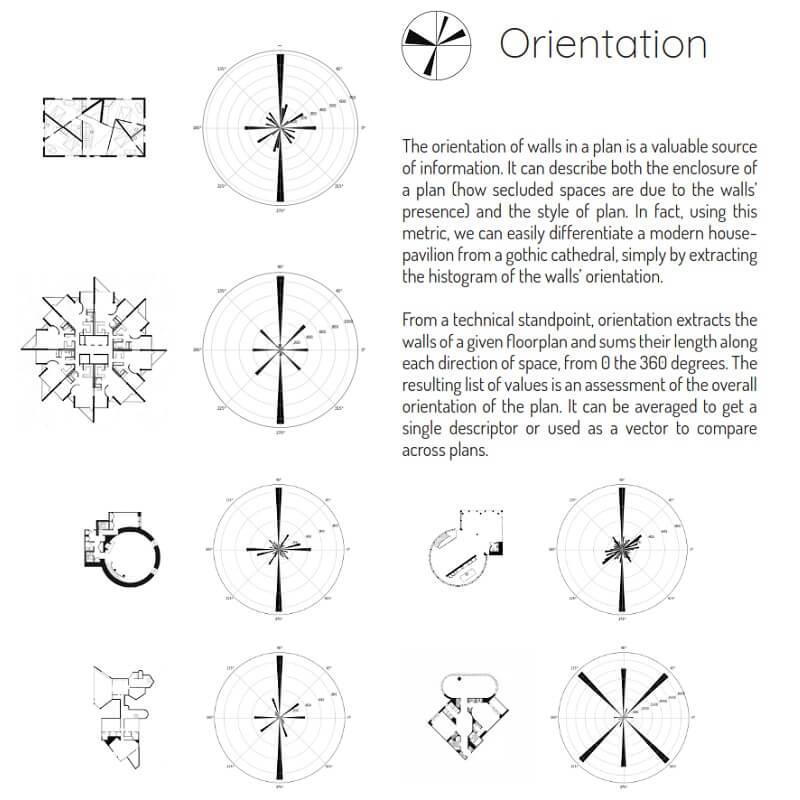 In a nutshell, the machine, once the extension of our pencil, can today be leveraged to map architectural knowledge, and trained to assist us in creating viable design options.
In a nutshell, the machine, once the extension of our pencil, can today be leveraged to map architectural knowledge, and trained to assist us in creating viable design options.
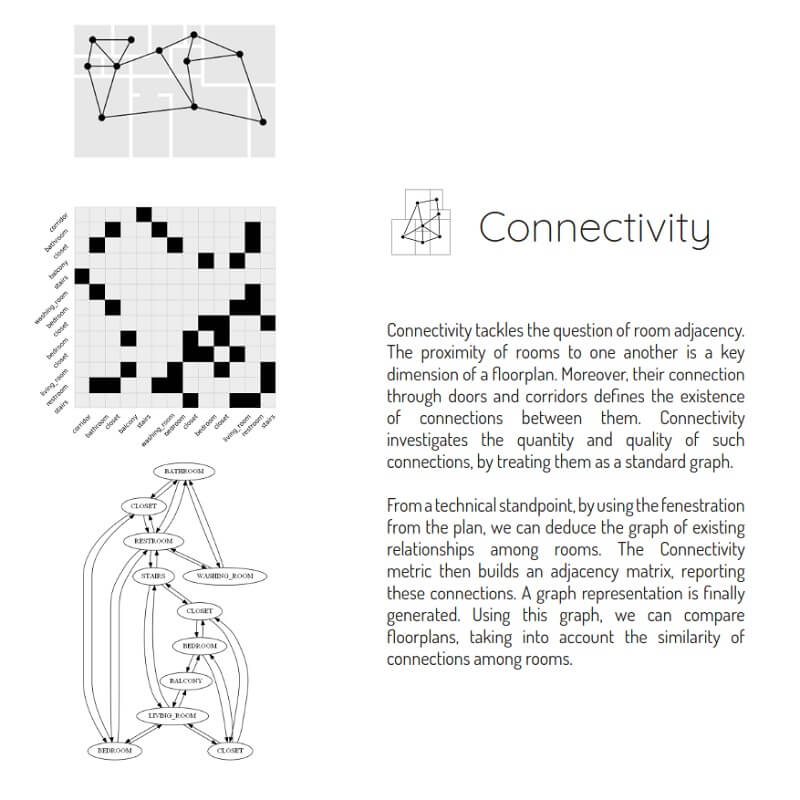
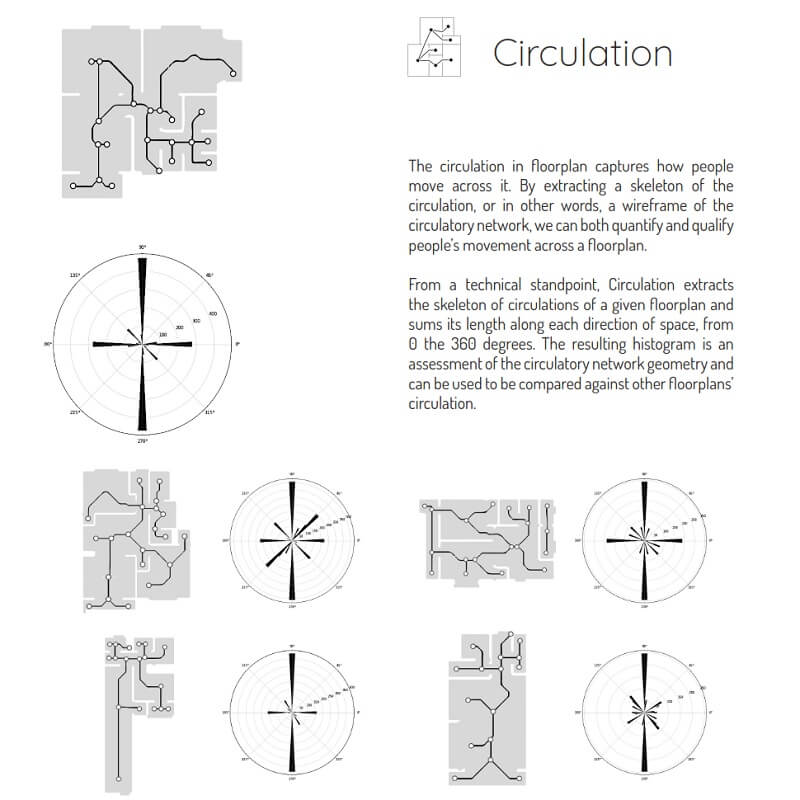
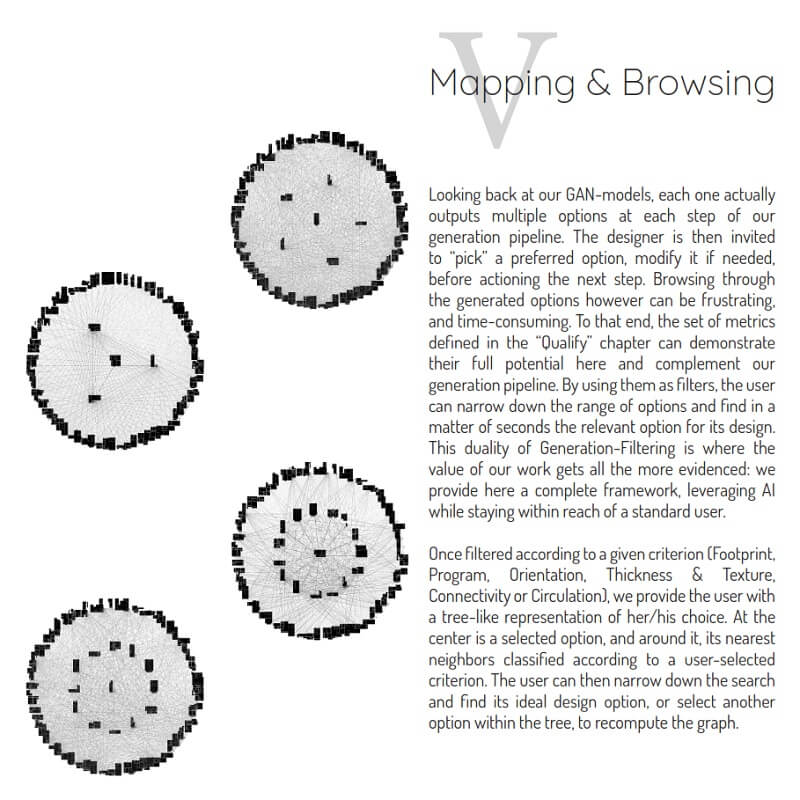




























Comments